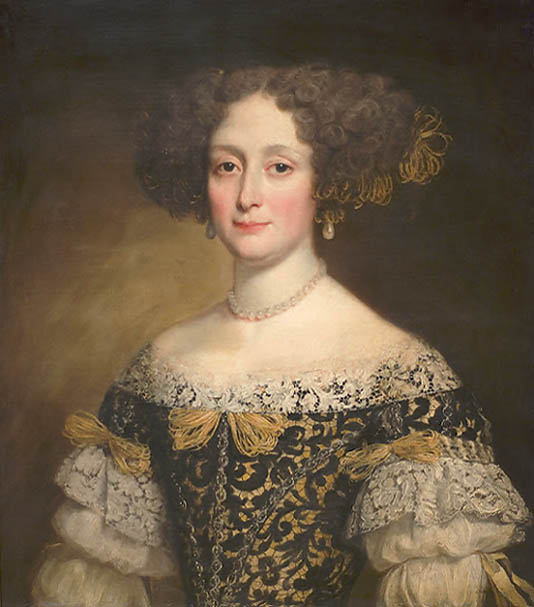
Marie-Madeleine-Marguerite d’Aubray, Marquise de Brinvilliers
(22 July 1630 – 17 July 1676)
On July 16, 1676, French aristocrat Marie-Madeleine Marguerite d’Aubray, Marquise de Brinvilliers was found guilty of murder, convicted on the strength of letters written by her dead lover and a confession obtained by torture. Her trial and the scandal which followed it launched the notourious Affair of the Poisons, which saw several French aristocrats charged with witchcraft and poisoning. We’ve already had a focus on Catherine Deshayes Monvoisin, aka La Voisin, a midwife who was arrested in 1679 after she was incriminated by the poisoner Marie Bosse, and maybe one of the most prominent trials of the Affair of the Poisons.[1] But, with Marie-Madeleine Marguerite d’Aubray, Marquise de Brinvilliers, the entire affair had started, and the great novelist Alexandre Dumas, père, dedicated her an entire novel[2].
An Attractive Libertine
Marie-Madeleine Marguerite d’Aubray was the daughter of Antoine Dreux d’Aubray, a civil lieutenant of Paris, and in 1651 she married an army officer, Antoine Gobelin de Brinvilliers, then serving in the regiment of Normandy. An attractive libertine, she became the mistress of a friend of her husband, Captain J.-B. Godin de Sainte-Croix, also called the Chevalier de Sainte Croix, a young cavalry officer of extravagant tastes and bad reputation. Their relations soon created a public scandal, and as the marquis de Brinvilliers, who had left France to avoid his creditors, made no effort to terminate them, her father M. d’Aubray secured the arrest of Sainte-Croix on a lettre de cachet, and Sainte-Croix was sent to the Bastille in 1663.
Plotting Revenge
On his release he plotted with her to take revenge on d’Aubray by poisoning him.[1] According to the charges laid against her in 1675, in 1666 Marie-Madeleine Marguerite de Brinvilliers had conspired with her lover to poison her father Antoine Dreux d’Aubray, and in 1670 she had likewise killed two of her brothers, Antoine and François d’Aubray, in order to inherit their estates. Her alleged accomplice Sainte-Croix had died of natural causes in 1672, so could not be charged anymore. There were also rumours that Brinvilliers had poisoned poor people during her visits to hospitals to test the poison which had been obtained by Sainte-Croix with the assistance of the king’s apothecaries, before she would use it against her father, but she was not charged with any such killings.
Tofana Poison
The charges against Brinvilliers originated from diaries and letters found in the possession of Sainte-Croix after his death, contained in a red leather box which he had marked as not to be opened until after the death of Brinvilliers. Marguerite de Brinvilliers was accused of using Tofana poison — also called Aqua Tofana, a strong poison that was reputedly widely used in Naples and Rome, Italy, named after Giulia Tofana, an infamous lady from Palermo, made a good business for over fifty years selling her large production — and was reported to have learned how to make it from Sainte-Croix, who as it is said had himself learned the method from Exili, an Italian chemist and poisoner who had been his cellmate in the Bastille.
The Water Cure
In 1675, on being accused, Marguerite de Brinvilliers fled to England, the Netherlands, and finally in a convent near Liège, where she was arrested by a policeman pretending to be a priest. On 17 July 1676, she was tortured with the water cure, that is, made to drink sixteen pints of water (more than 9 litres) and forced to confess. On the strength of the documents left behind by Sainte-Croix and her own confession she was sentenced to death, despite the objections of her defence counsel that there was no good evidence for her guilt. She was then beheaded, and her body was burned at the stake.
Compromised in Scandal
During her interrogation, de Brinvilliers declared: “Half the people of quality are involved in this sort of thing, and I could ruin them if I were to talk.” Those whom she refused to name were later compromised in a scandal that touched the court of King Louis XIV.[1] Her trial and the scandal which followed it launched the Affair of the Poisons, which saw several French aristocrats charged with witchcraft and poisoning, and led to execution of 36 people. The sensational trial of de Brinvilliers drew attention to a number of other mysterious deaths, starting a number of rumours. Prominent people, including Louis XIV, became alarmed that they also might be poisoned. The King forced some of his servants to become his foretasters.[4]
The Poison Affair
In 1680, after the last trial the Poison Affair implicated 442 suspects: 367 orders of arrests were issued, of which 218 were carried out. Of the condemned, 36 were executed; five were sentenced to the galleys; and 23 to exile. This excludes those who died in custody by torture or suicide. Additionally, many accused were never brought to trial, but placed outside of the justice system and imprisoned for life by a lettre de cachet. Since the original confession of the Marquise de Brinvilliers was given under torture, her guilt remains uncertain.
Teofilo Ruiz, The Terror of History: The Witch Hunt in Early Modern Europe, UCLA, [6]
References and Further Reading:
- [1] La Voisin and the Scandalous Affair of the Poisons, SciHi blog, February 22, 2014.
- [2] Alexandre Dumas, père: The Marquise de Brinvilliers (full text)
- [3] Marie-Madeleine-Marguérite d’Aubray, marquise de Brinvilliers, French noblewoman, at Britannica online
- [4] Marie-Madeleine-Marguérite d’Aubray, marquise de Brinvilliers, at murderpedia
- [5] Madame de Brinvilliers at Wikidata
- [6] Teofilo Ruiz, The Terror of History: The Witch Hunt in Early Modern Europe, UCLA, UCLA @ youtube
- [7] Duramy, Benedetta Faedi (2012). “Women and Poisons in 17th Century France”. Golden Gate University School of Law. Faculty Scholarship: 347–370
- [8] Petitfils, Jean-Christian (2010). L’affaire des Poisons: Crimes et sorcellerie au temps du Roi-Soleil. Paris: Perrin. pp. 29–48.
- [9] Walch, Agnès (2010). La Marquise de Brinvilliers. Paris: Perrin.
- [10] Carroll, Erika (2018). “Potions, Poisons and “Inheritance Powders”: How Chemical Discourses Entangled 17th Century France in the Brinvilliers Trial and the Poison Affair”. Voces Novae. 4 (2)
- [11] “‘Madame de Brinvilliers’ – written by Alexandre Dumas”. Alexandre Dumas.
- [12] Timeline of serial killers, via Wikidata





